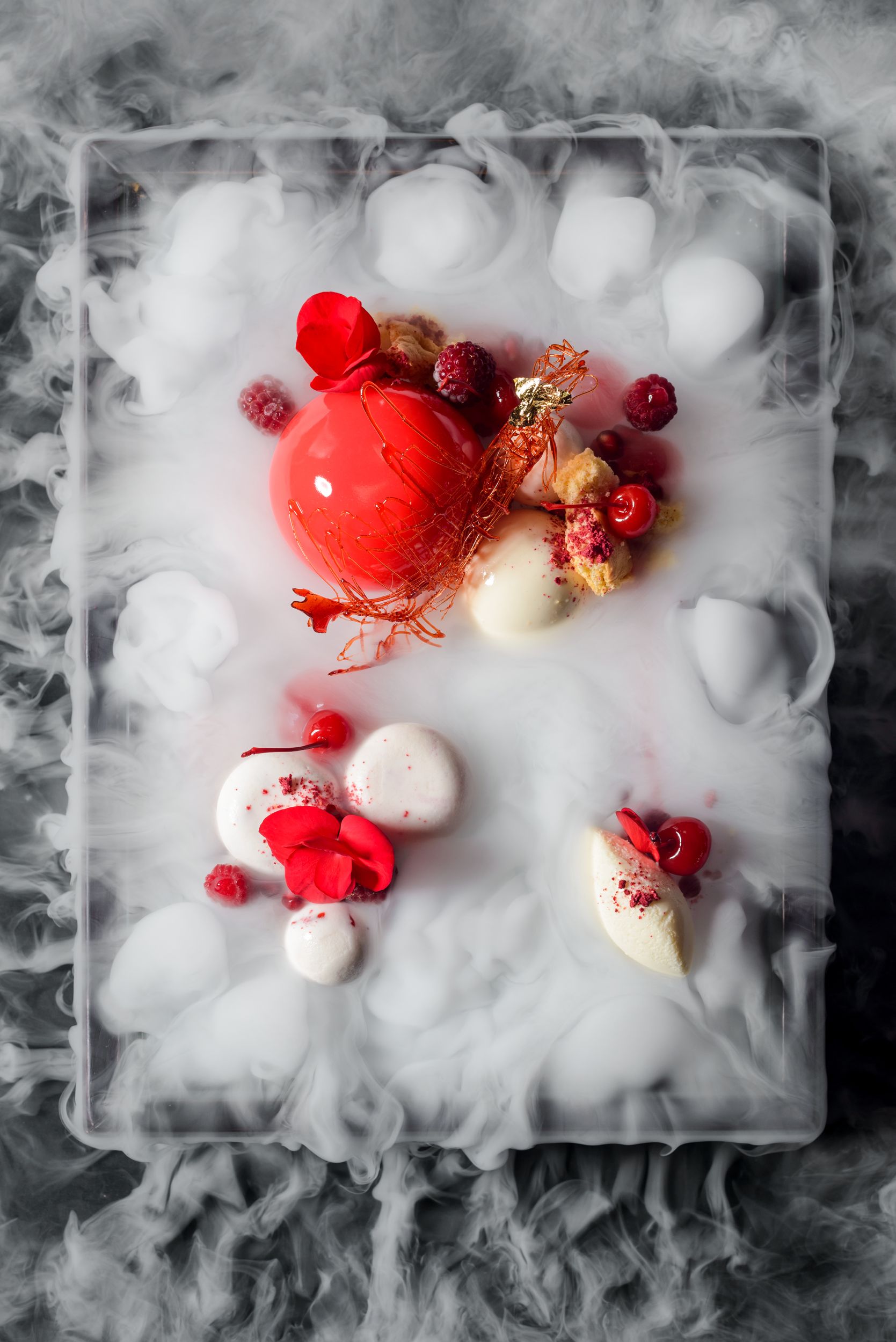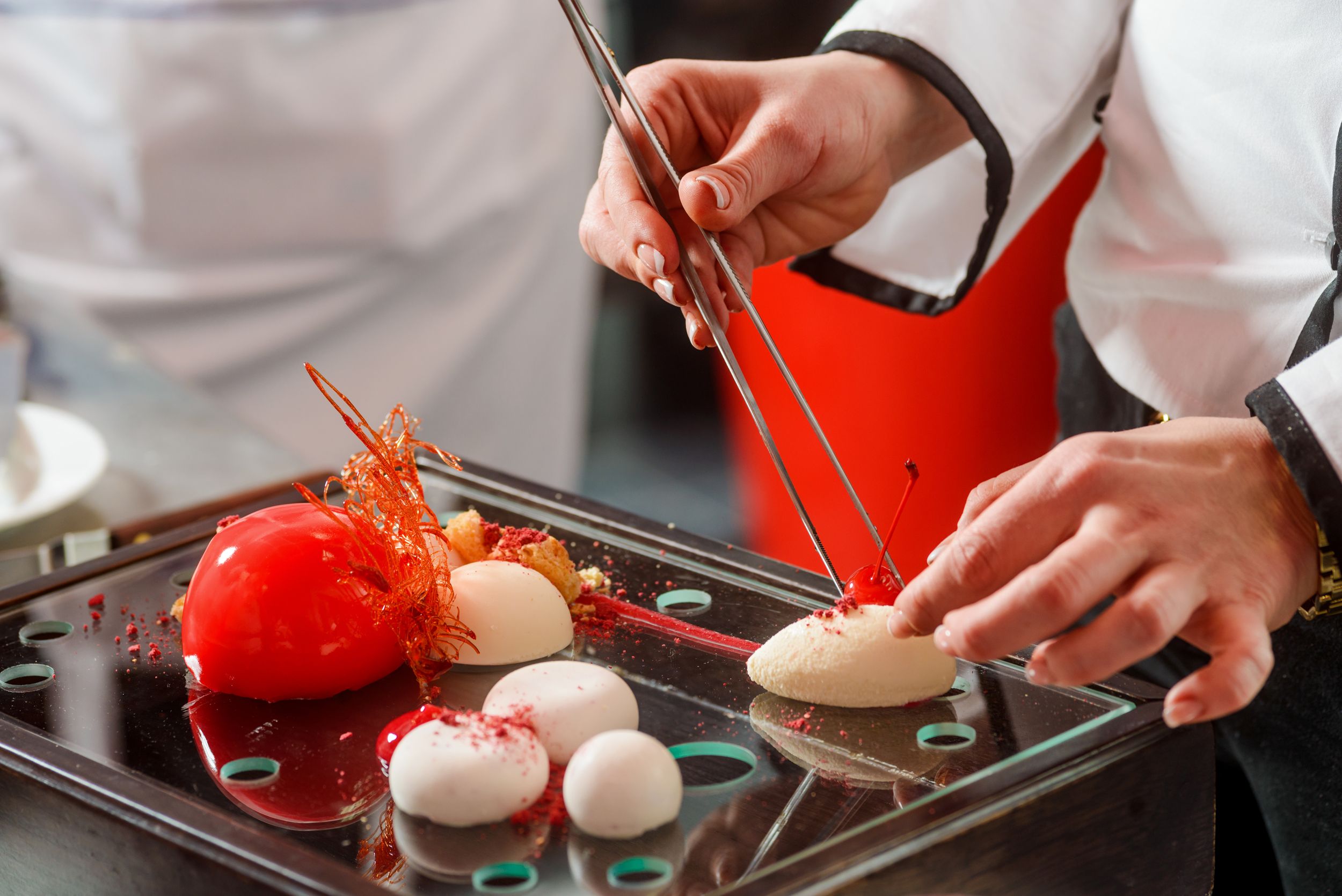Molecular Gastronomy
When you hear the term “molecular gastronomy,” what comes to mind? Chefs acting like mad scientists in a laboratory-style kitchen with liquid nitrogen, centrifuges and liquids bubbling in beakers? Or do you envision a high-end restaurant serving elaborate, tiny portions of food-as-art with brightly coloured spheres of gel surrounded by trails of smoke? These associations with molecular gastronomy are familiar stereotypes, but the techniques and tools used with this approach to cooking have some very practical applications that have become part of the repertoire in many modern restaurants from fine dining establishments to pubs.
And while not everyone embraces the term “molecular gastronomy”—one critic, British chef Heston Blumenthal, said that “Molecular makes it sound complicated and gastronomy makes it sound elitist”—the fact remains that the principles of the term have had a significant influence on the food and restaurant industry for at least a couple of decades.
Defining molecular gastronomy
Molecular gastronomy refers to the scientific discipline concerned with the physical and chemical transformations that occur during the cooking process. It seeks to generate new knowledge by exploring innovative, science-based principles to transform food from its original state to something different using chemistry, temperature, gelling agents, or devices, such as controlled-temperature water baths (sous vide), liquid nitrogen for flash freezing, siphons with nitrous oxide cartridges (for foams), rotary evaporators (for the preparation of distillation and extracts), and pipettes for injections and infusions.
History and evolution
The term “molecular and physical gastronomy” was coined in 1988 by French physical chemist Hervé This—often referred to as “The Father of Molecular Gastronomy”—and Hungarian physicist Nicholas Kurti, who were experimenting with the scientific phenomena that occur during food preparation processes. Eventually, the term was shortened to "molecular gastronomy," which is still used today. Associated terminology includes “molecular cooking,” referring to the techniques used, and “molecular cuisine,” describing the culinary style based on those techniques.
While fundamental to modern cuisine today, the roots of molecular gastronomy go back centuries. 18th- and19th-century scientists studied the impact of heat and cooking, and explored the various properties of food. All their discoveries were foundational to future developments.
Many of the tools and ingredients used today are not new either. The difference is that these tools and techniques had remained in their original environments: science labs or industrial food manufacturing facilities. It wasn’t until the 1980s that these components migrated into restaurant and home kitchens and started appearing in cookbooks. Kurti and This played an important role in melding these worlds together and modernizing cooking techniques for novel results and more efficient cooking processes.
 On Vancouver Island
On Vancouver Island
I reached out to some local restaurateurs for their take on molecular gastronomy and its relevance. “Molecular gastronomy is an interesting idea to me,” says Clayton Thornber, general manager of Wind Cries Mary in Victoria. “I think that it has a time and a place, and can add to an experience, but I feel that it sometimes goes too far.” You won’t find outright molecular gastronomy techniques used at Wind Cries Mary. “We feel that the flavours should be big, bold, and you should never be searching for them. But,” he adds, “That’s just what works for our food. I have had some incredible dining experiences when gastronomy is woven into the experience in the right amount.”
I also had an interesting conversation with Brian Tesolin, executive chef at The Courtney Room, who spoke passionately about how applying principles of molecular gastronomy could not only enhance the overall taste and experience of certain dishes, but also act as a brilliant problem solver—allowing even those with dietary restrictions to enjoy a wider range of textures and intensified flavours than previously possible. For example, by using thickening agents derived from seaweed rather than animal products, or finding novel ways to create gluten-free dishes, everyone is able to have an equally exceptional dining experience.
Tesolin enthusiastically described many of the techniques and agents used in dishes at The Courtney Room and the resulting creations sounded both intriguing and mouth-watering. For instance, they use modified starch to alter chocolate into a dried form that can be made into different shapes, looks like a rock, crumbles in your mouth, and then rehydrates upon contact with your saliva, reverting back to its original form. The idea is to give your brain an experience it wasn’t expecting.
Final thoughts
Although the current mood is for more rustic and natural food presentation styles, there is still a time and place for the “wow” factor. And while you may not see as many whimsical and architectural creations coming out of restaurant kitchens as you did in the ’90s, many of the concepts and techniques of molecular gastronomy are now commonplace in restaurant kitchens across the world and are simply part of modern cooking.
For creative chefs eager to push the boundaries of what is possible, molecular gastronomy offers endless possibilities. Admittedly, while some experimental creations will not have mass appeal—clear ravioli, carrot air or apple caviar have a narrow target market—molecular gastronomy has undoubtedly resulted in advancements in food preparation. We seem to be at an ideal point in history where we can embrace traditional methods of cooking along with progressive ones, reaching greater culinary heights than ever before, whether you’re experimenting at home or dining out.





